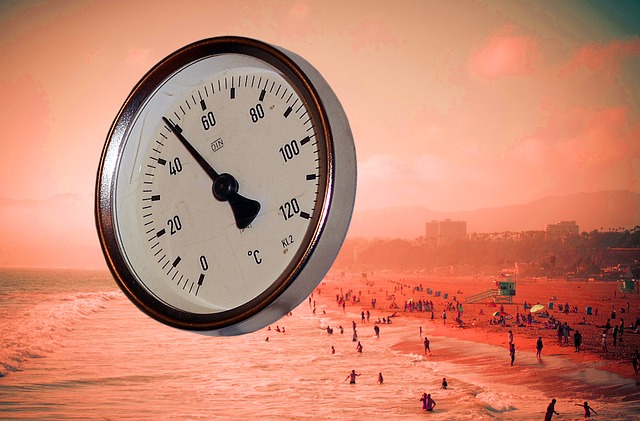Researchers revealed what they learned after using a computer model that explores what could happen in the next thousand years. According to their findings, there is a small chance that we will experience a significant rise in global warming. The temperature is currently expected to rise by around 3% – even if there are only moderate greenhouse gas emissions in the future. Even more concerning, though, is the one-in-ten chance of a 7-degree Celsius rise in the next 200 years. It seems we may have already reached the point of no return, though. According to the model, there is also a one-in-ten chance that the planet can warm up by 3 degrees, even if all CO2 emissions were completely stopped this century.
The Factors Influencing Global Warming

The degree of temperature rise we should anticipate is determined by the amount of greenhouse gases we pump into the Earth’s atmosphere. In part, it is also determined by how sensitive the climate is in response to this increase. Equilibrium climate sensitivity refers to the degree of temperature increase that will occur after the CO2 levels in the atmosphere double. This is dependent on specific rapid feedback effects that typically occur when there is a rise in temperature.
These include changes in cloud behaviour and an increase in atmospheric water vapour. Some studies have suggested that the expected equilibrium climate sensitivity amount could be somewhere around 2 to 5 degrees Celsius. However, for models that were run beyond 2100, the rise was expected to be around 3 degrees. In a new study, Andrey Ganopolski from the Potsdam Institute for Climate Impact Research in Germany tweaked their model to find out what the result would be if the equilibrium climate sensitivity turned out to be different from what they expected.
Previous models had not included certain long-term carbon effects, such as methane and CO2 release from wetlands and permafrost. Ganopolski and his team felt that it was important that these feedback effects be included since an increase in CO2 results in more methane release and vice versa. At assumed sensitivity levels, their data showed a similar expected rise of 3 degrees after 2200 with moderate emissions. However, for higher assumed sensitivities, the projection reached up to 7 degrees.
Read More: Iceberg-making submarine aims to help tackle global warming by ‘re-freezing’ the Arctic
Sooner Than We Think

While global warming may seem like a problem that is too far in the future to worry about, it is really only a couple of generations into the future. Therefore it’s something our great-grandchildren will have to deal with. In reality, that is a lot sooner than we think. There’s so many factors yet accounted for that make working out the equilibrium climate sensitivity of the future so challenging. For instance, it turns out that a reduction in shipping emissions is actually thought to have contributed to the recent increase in temperature. It turns out that the aerosol emissions from shipping had been counteracting the warming effect of the greenhouse gases.
One of the biggest issues is that aerosol emission effects can be very complex. This makes it difficult to work out how much of a cooling effect they have. The study’s authors feel that a three-degree increase can still be avoided if future emissions are scaled down. Additionally, the equilibrium climate sensitivity would need to be on the low side. However, he feels that it may already be too late to prevent anything under a two-degree increase in temperature. Our best hope is to discover all the factors and act as swiftly as possible. While we can’t stop the seemingly inevitable increase, we may still be able to limit how far it can rise.
Read More: Global Warming and Mind-Eating Parasites Could Be Creating World-Wide Intelligence Gap

